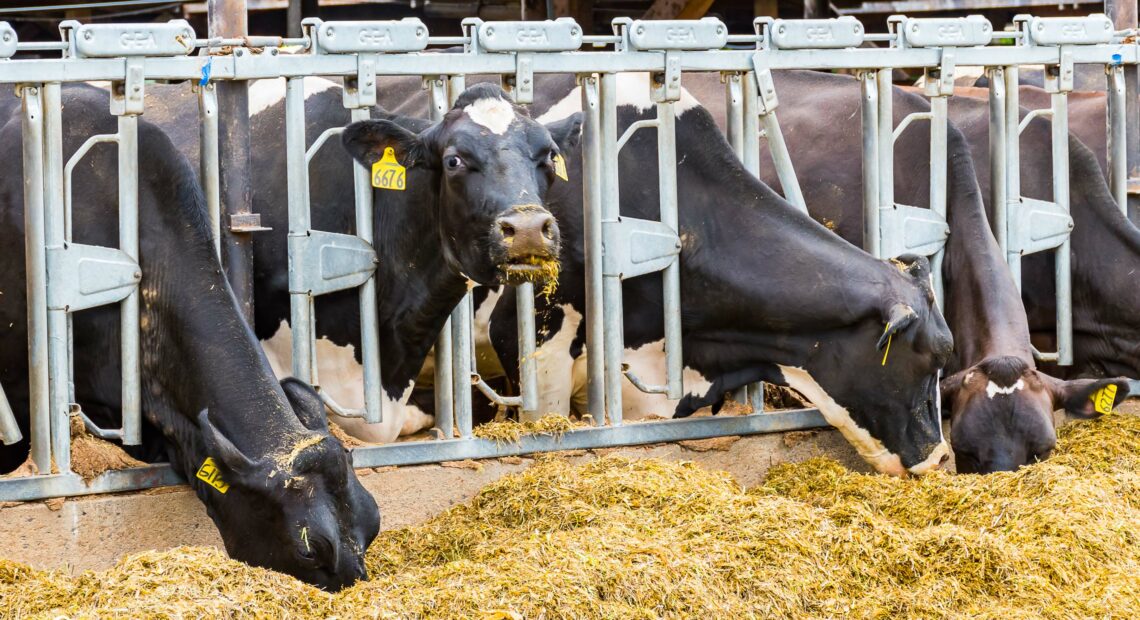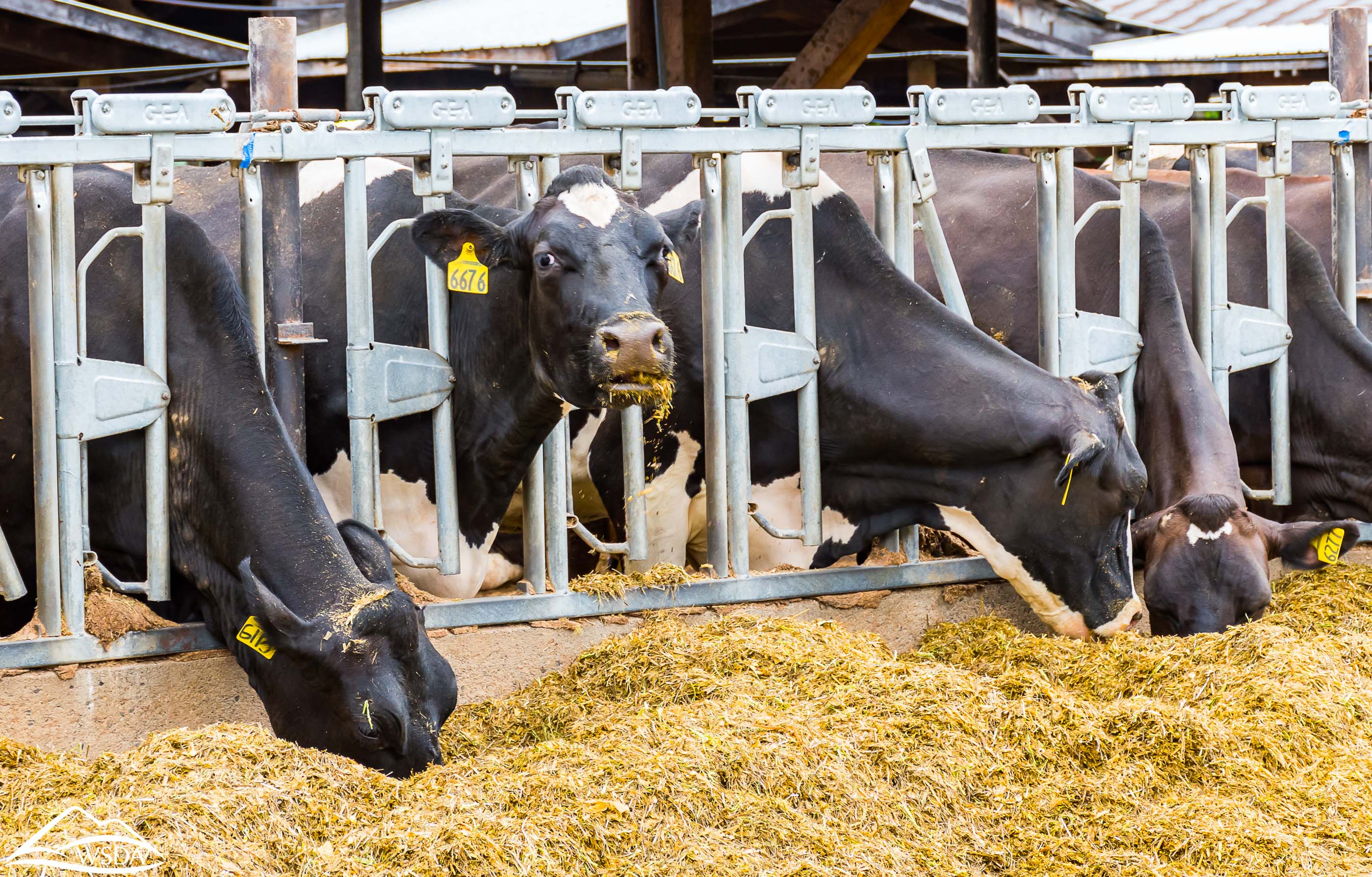
Migratory birds could cause avian influenza in Northwest dairy cattle
Listen
(Runtime :58)
Read
Experts say they are not sure how the highly-pathogenic avian influenza is passed among dairy cattle yet, but birds and cattle mingle a lot more than you would think.
Perhaps it’s that wild birds, really hungry now as they migrate and come out of winter, are looking for an easy meal. Dairy cow feed includes corn, grains and supplements, which attract the hungry birds.
“Avian influenza is everywhere,” said Amber Itle, veterinarian for the Washington State Department of Agriculture. “Because it’s ubiquitous, we need to be considering the fact that the risk is in our backyard right now, always, everyday.”
Itle said birds will really start moving in the next few months. She said now is the time for farmers to further tighten biosecurity.
Cattle health and biosecurity
So far, bird flu has sickened about 10% of the dairy cattle in the herds that have gotten avian influenza across the United States. Experts say most cattle make a full recovery. In poultry, this same virus causes high mortality rates, but in dairy cattle that is not being reported.
Federal recommendations for biosecurity include: trying to deter birds from getting into barns or areas where there are cattle, managing the movements of cattle and isolating new animals for 21 days upon arrival, keeping all species of animals, such as poultry, pigs, cattle separate, and keeping cats, dogs and wildlife out of barns.
Bird flu in cattle background
So far, highly pathogenic avian influenza has sickened cattle in Idaho, New Mexico, Texas, Kansas, Ohio and Michigan. There have been no reports of sick cattle with bird flu in Washington or Oregon, those state agriculture officials said.
The U.S. Department of Agriculture and state officials are working together in several groups to better understand the disease transfer from birds to cattle and from cattle to people.
Much of the disease appears to be infecting the animals’ udders, with calves and male cattle not contracting the disease because they don’t have developed udders, Itle said.
Just one person in Texas has been confirmed to have gotten sick from cattle infected with the disease. One man’s eyes got red after he was exposed to sick cattle. This is only the second known case of the virus transferring to humans, according to National Public Radio.
Still, much is unknown about the avian flu in cattle, how the disease is being transferred from bovine to bovine, and how it’s being spread to people.
In Texas, U.S. Department of Agriculture officials said they are finding bird flu and dead grackles, blackbirds and pigeons, which are difficult to keep out of dairy barns.
Bird flu also has sickened a lot of other animals across the world, including marine mammals in South America, and there is a reported mink farm outbreak in Europe, according to NPR.
What about the milk?
It’s standard practice to remove sick animals from the milking string in the nation’s dairies, Itle said. Sick animals tend not to give much milk anyway, she said.
The virus can be found in the milk of sick cows but the sick animals’ milk is disposed of. In addition, pasteurizing milk kills viruses and bacteria, making commercial milk safe to consume at this time, according to the USDA.
Northwest dairy industry
Avian flu in cattle is definitely concerning to the dairy industry across the Northwest and United States.
Steve Seppi is the executive director of the Dairy Farmers of Washington, a quasi-state commodity commission. He said the milk production from an infected animal drops significantly for nearly three weeks. The animals tend to produce thick colostrum-type milk that’s very concentrated. This not only hurts herd health but also farmers’ profitability.
“Dairy farmers operate on pretty thin margins, especially in the last couple years with inflation and high input costs, especially feed costs,” he said. “Farmers are taking it seriously. They are taking precautions, biosecurity cautions and moving cattle precautions to keep this disease out of their herds.”
Seppi also said milk prices are down from 2022. Washington farmers export almost half of what’s in the state, much of it powdered, to top markets such as Mexico, Indonesia and Japan.
“Everything is a little more expensive these days, and prices aren’t keeping up,” Seppi said.
Seppi added that many farms are upping their requirements on hand washing, boot washing, and other biosecurity measures. Some farmers are even putting up speakers in barns with hawk calls to scare away birds or using dummies of coyotes or wolves in fields to keep waterfowl at bay.
“The last couple of years have been tough for our farmers,” Seppi said. “The last thing they are looking for right now, is added economic pressure of something like a drop in production for something like avian influenza. They’re taking it seriously.”
Human mental health also a worry
Northwest dairies are already hurting from low milk prices, Itle said. So those operators can’t likely afford a highly-pathogenic avian influenza outbreak in their cattle. In the Northwest so far, one dairy in Idaho has a confirmed case of bird flu in cattle, according to the USDA.
Itle said she also worries about the mental health of dairy farmers and dairy workers, especially if bird flu were to become more of a problem in Northwest cattle.
“They truly care about their animals,” Itle said of farmers. “They really care about the environment and trying to be sustainable. They have all these pressures and regulatory burdens they have to overcome. Something like this, that has that uncertainty, can be enough to push someone over the edge.”
















